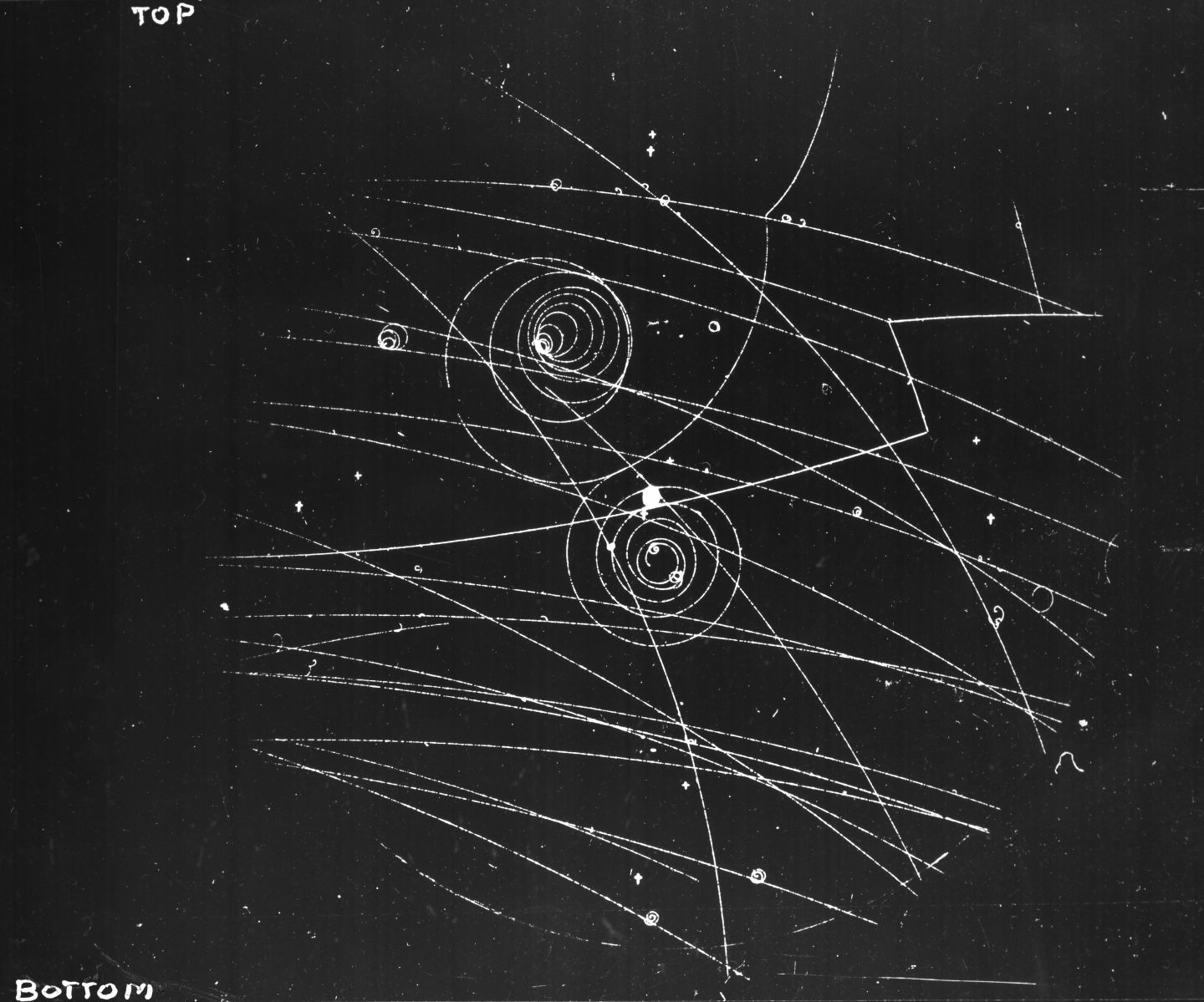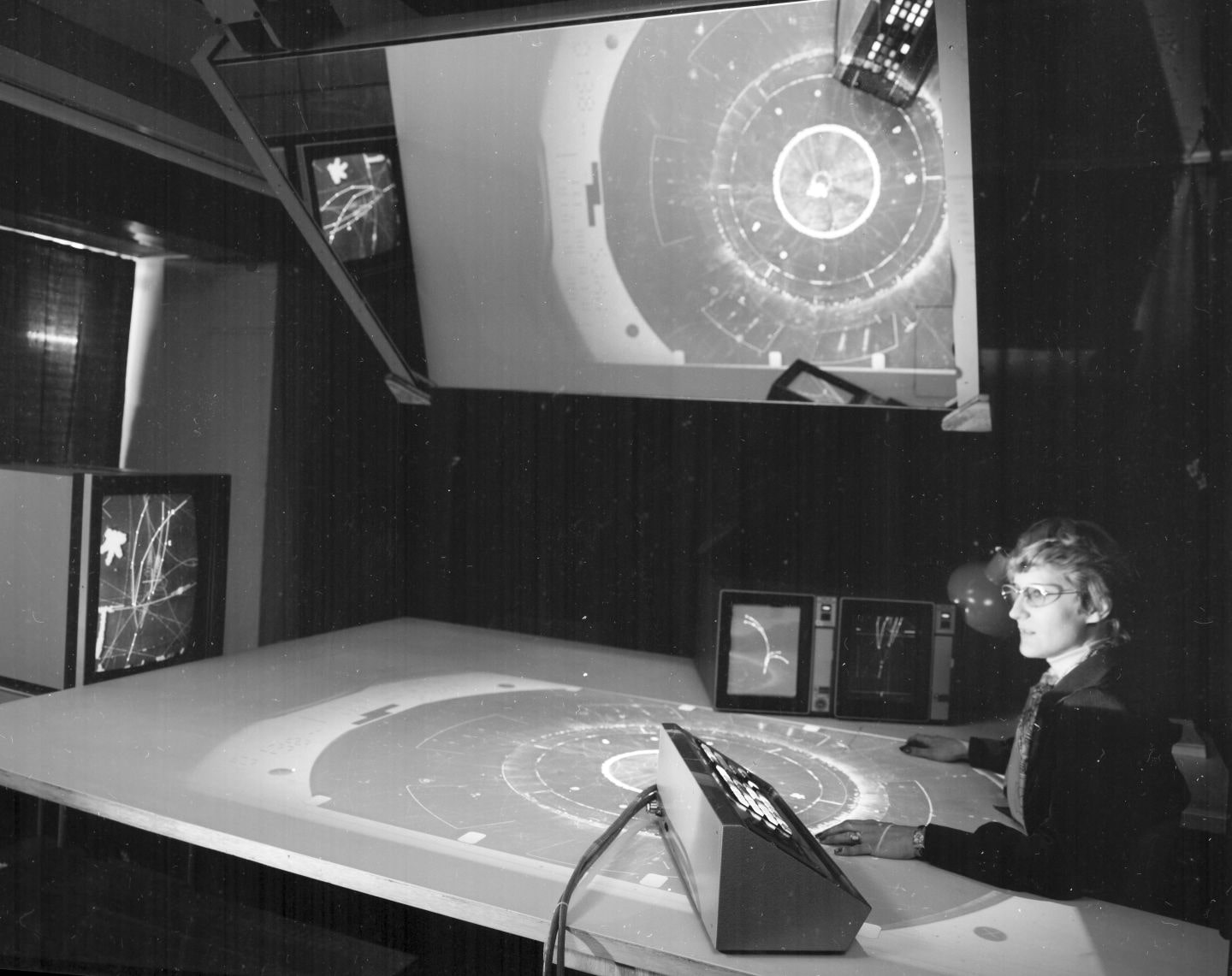CERN70: Tracing particles
26 March 2024 · Voir en français
Part 6 of the CERN70 feature series. Find out more: cern70.cern
Madeleine Znoy was one of the people responsible for “scanning” the films from the bubble chambers for interesting events

In the 1960s and 1970s, two techniques for accurately recording the tracks of invisible particles dominated experimental high-energy physics, the bubble chamber and the spark chamber. The pictures produced – simple photographs – were then examined for interesting tracks by specially trained personnel, the “scanners”.
The bubble chamber programme at CERN started in 1959, when the 30-centimetre hydrogen bubble chamber recorded its first image. In parallel, a new, more ambitious project had begun: the construction of a two-metre chamber, which started operating in 1965. In 12 years of active life, this “big” bubble chamber produced more than 40 million photographs and used 20 000 km of film (enough to go half-way around the Earth!).
CERN also pioneered the use of bubble chambers for the study of neutrino interactions, and it was the great interest in this field that led to the construction of the Big European Bubble Chamber (BEBC), with 20 cubic metres of liquid hydrogen, and Gargamelle, which contributed to the outstanding success story of the discovery of weak neutral currents at CERN.
The acquired expertise in engineering and cryogenics served the construction of large detectors for experiments at the Large Electron-Positron Collider (LEP) and the Large Hadron Collider (LHC), and the collaborations established then were the starting point for the international cooperations that prevails today.
Recollections
It was true detective work. There was always something to learn. "Scanning" the trajectories of the elementary particles recorded in the images allowed us the opportunity to gain an insight into that type of physics research at our work station.
Madeleine Znoy
Madeleine Znoy was a “scanner” at CERN, a person responsible to examine bubble chamber films to identify interesting events. She went on to work for the OPAL experiment at LEP, and then for the electronics coordination team of the ATLAS experiment at the LHC.

“Our work as “scanners” consisted of identifying the trajectories of the particles in the images taken inside the bubble chambers. The scanning was carried out on the basis of criteria laid down by the physicists. Initially, the work was done manually, using a pencil and a sheet of paper to note down the coordinates of where the interactions had taken place as one would on a map (e.g. A-3, B-4) and a description of the interactions (the number of tracks, disintegration, ionisation, energy, etc.). Later, the measuring equipment evolved and was linked up to a computer. The data were recorded and immediately transmitted to be processed by a reconstruction programme which would send back a message requesting a further set of measurements, corrections to be made or indicating that it had all the information it required.
"Scanning" took place round the clock, as the quantities of film to get through were enormous. Female scanners examined the images between 7 a.m. and 10 p.m. and men, often students, would take over between 10 p.m. and 7 a.m. The shifts only lasted four hours because the work put a lot of strain on the eyes. We worked in complete darkness, with three projectors to illuminate the films we had to examine. Each event was actually analysed by three cameras, from three different angles. We could scan hundreds of images in each shift. I even beat a record by evaluating 750 images in four hours! At first, the physicists thought it was impossible and that I must have missed some interesting events. In reality, everything was correct and they were very surprised!
It was true detective work. There was always something to learn. "Scanning" the trajectories of the elementary particles recorded in the images allowed us the opportunity to gain an insight into that type of physics research at our work station.
By virtue of always participating in the initial phases of the experiments, I would take part in the development and testing of new measurement systems. Once a system went into production, I would move on to the next experiment, working on another system with another team. I really enjoyed working with physicists and technicians as well as taking part in the collaboration with other laboratories. We were young and full of enthusiasm. We worked hard but we also knew how to have a good time. Those were good times …”
----
This interview is adapted from the 2004 book “Infinitely CERN”, published to celebrate CERN’s 50th anniversary.
